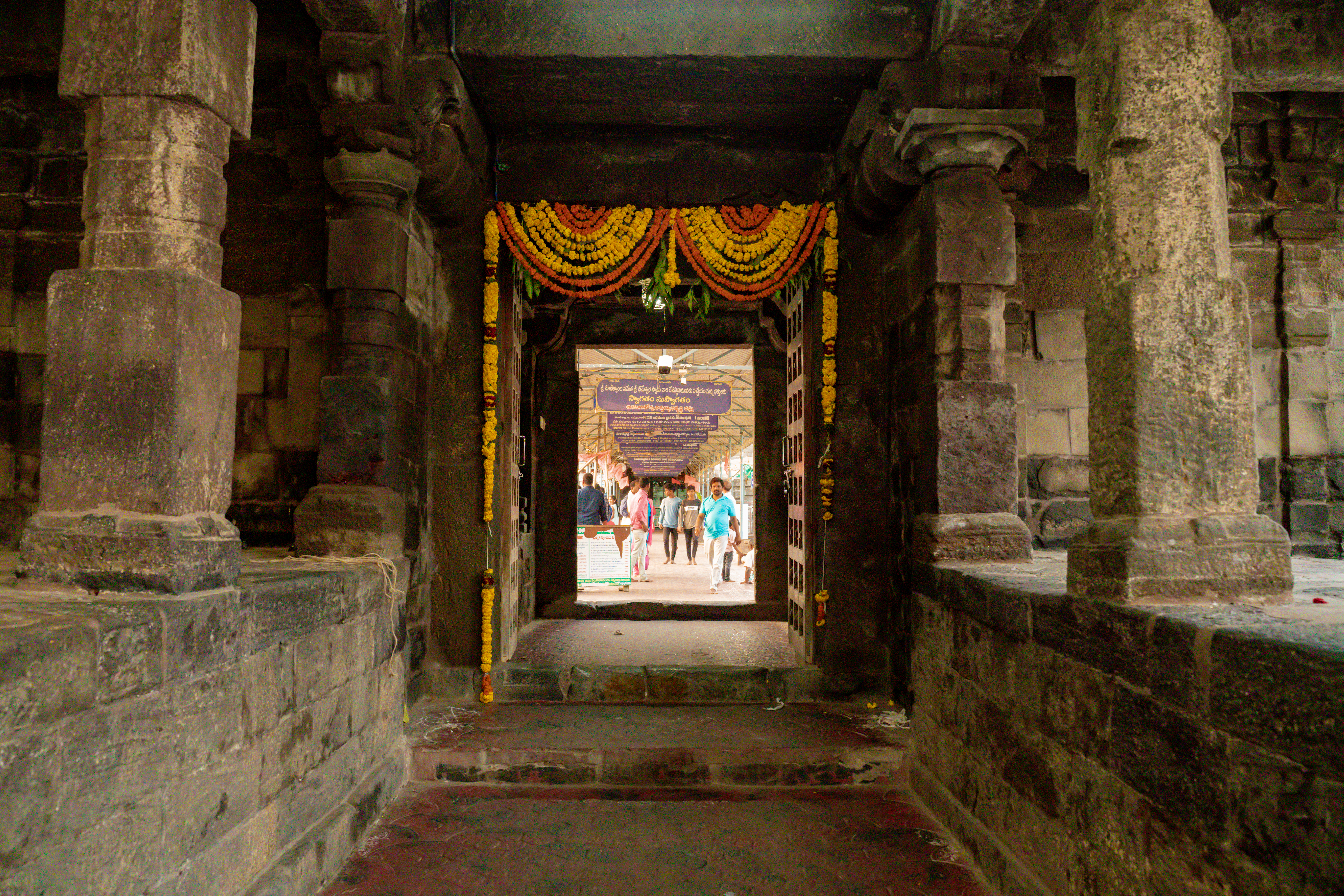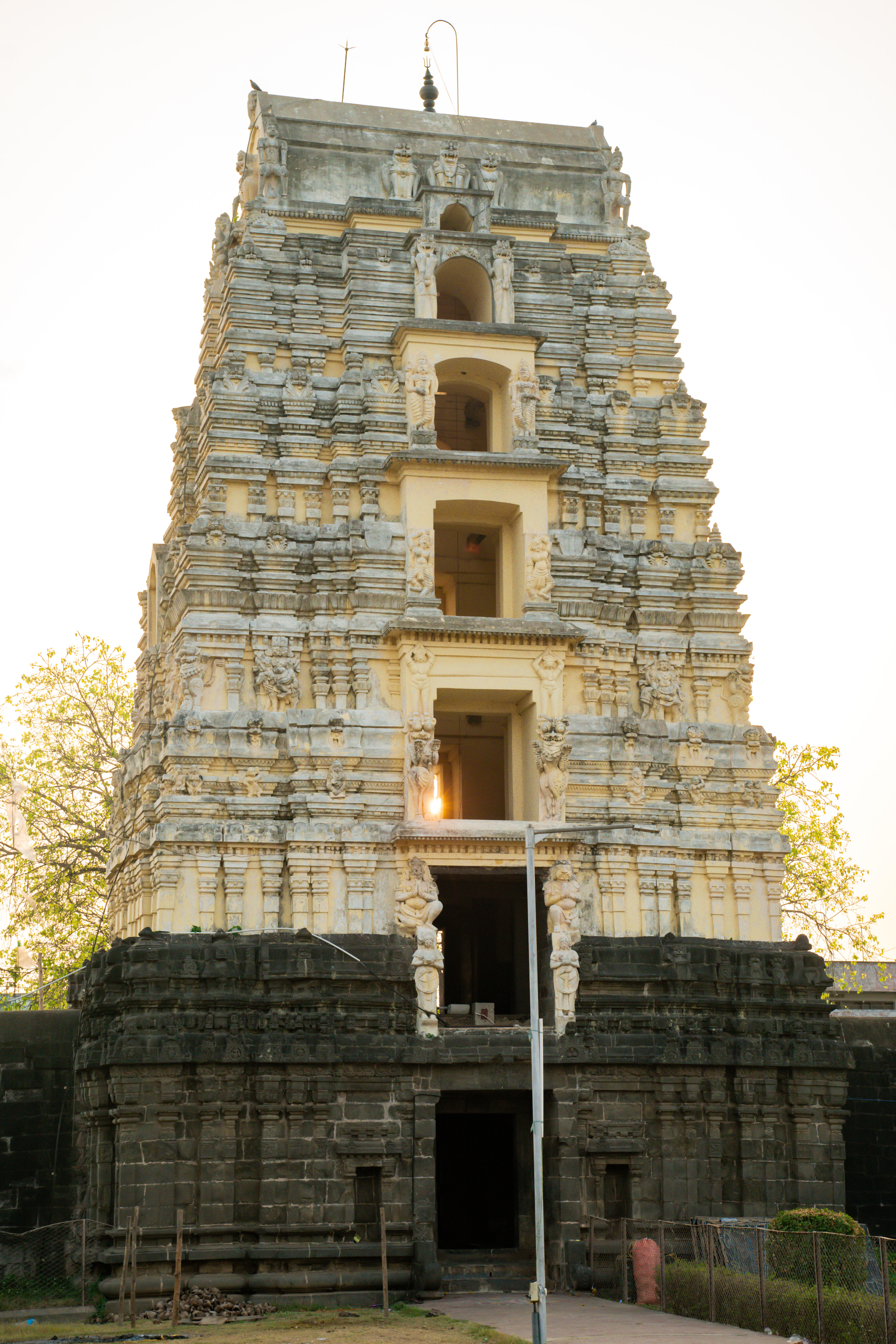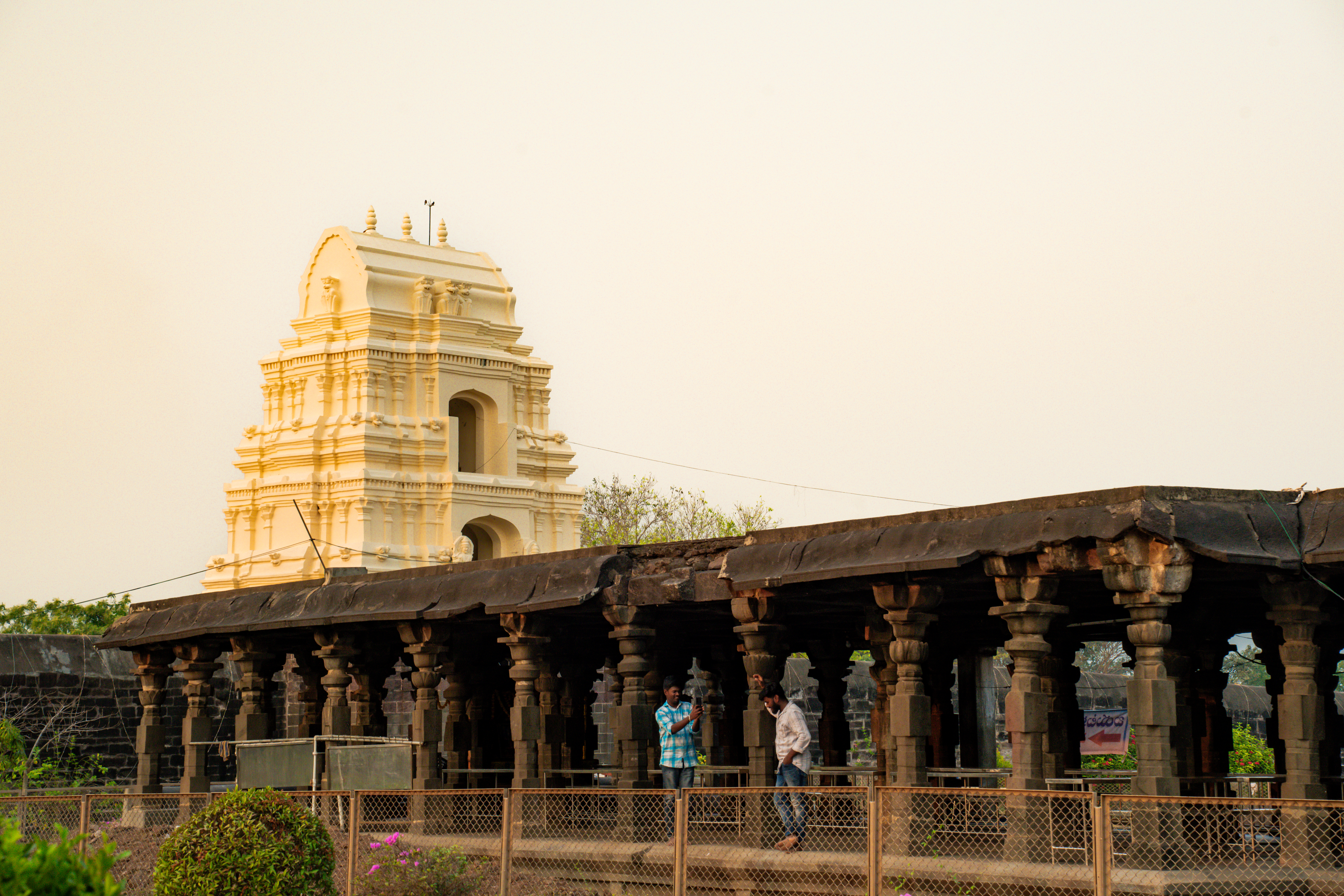History Draksharamam, located 28 km from Kakinada and 50 km from Rajahmundry, is a historic pilgrimage center dedicated to Lord Bhimeswara Swamy and Goddess Manikyamba. The temple's origins trace back to the 6th century CE, during the reign of the Chalukyas. According to local lore, the temple marks the site where the confluence of the Tungabhadra and Krishna rivers was celebrated. The temple gained prominence as one of the Ashta Dasa Peethas (18 Shakti Peethas), where it is believed that a part of Goddess Sati’s body fell. The Bhimeswara Swamy Temple, along with its sister temples in the Pancharama group, became a revered destination for devotees. The historical significance of the temple is reflected in its inscriptions and epigraphical details, which date back to the 13th century CE. Lore The lore of Draksharamam is deeply intertwined with the mythological narratives of Hinduism. According to the Skanda Purana, the temple is associated with the story of Daksha Prajapati and his sacrifice. Daksha, having felt snubbed by Lord Shiva, did not invite him to his yagna, leading to the tragic demise of Sati, Shiva's consort, at her parental home. In his grief, Lord Shiva carried Sati's corpse and danced in the Pralaya Thandava. To ease his sorrow, Lord Vishnu used his Sudarshana Chakra to dismember Sati's body, with pieces falling across various locations, including Draksharamam. Here, the temple enshrines Manikyamba, representing one of these sacred Shakti Peethas. Additionally, it is believed that Bhimanatha, another form of Shiva, settled in Draksharamam at the behest of Parvati, Daksha's daughter. This profound connection to divine mythology underscores the temple’s spiritual significance and draws pilgrims seeking the blessings of Lord Bhimeswara Swamy and Goddess Manikyamba. Architecture The Lord Bhimeswara Swamy Temple in Draksharamam, is renowned for its intricate Dravidian architectural style. Built around the 6th century CE, the temple is an example of the Chalukyan architectural influence in Southern India. The temple features classic elements such as a towering Vimana (sanctum tower), a detailed Mandapa (pillared hall), and an imposing Rajagopuram (main entrance tower). Its design and architectural elements and styles are associated with the Pancharama temples, blending religious symbolism with elaborate craftsmanship. The temple is surrounded by numerous inscriptions and epigraphical details that provide valuable historical insights. The structure is protected as a monument, with ongoing renovations managed by the Archaeological Department to preserve its beauty and divine atmosphere. |
To be updated




